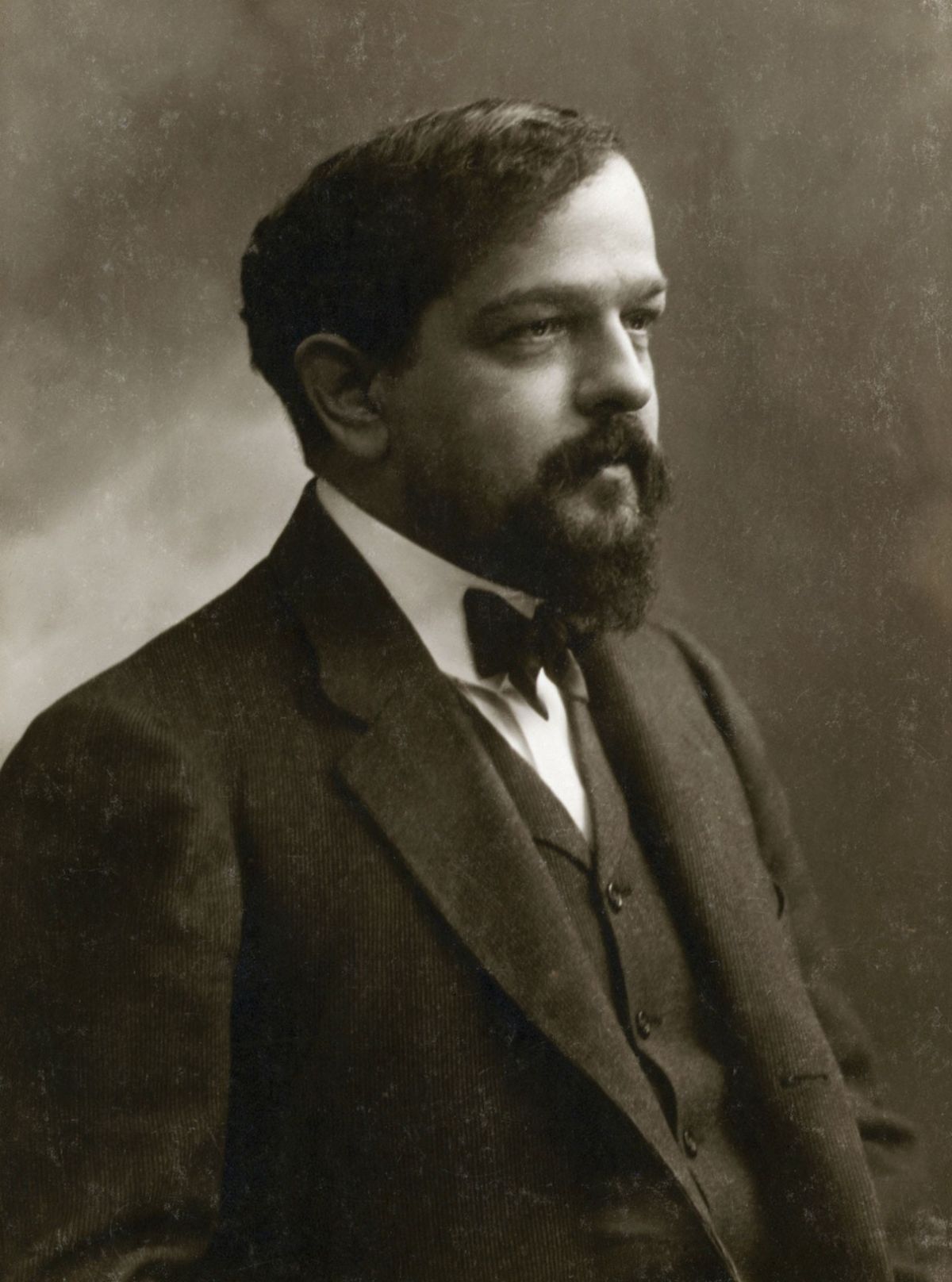
Erik Satie. Photo by Sonia y natalia. Wikimedia Commons.
Top 10 Fascinating Facts about Erik Satie
Erik Satie (1866–1925) was a French composer and pianist. Today he is best known to us through his well-loved Gymnopédies, the small melancholic piano pieces from 1890, but at the time of his death in 1925, Satie was barely known beyond the city limits of Paris.
Erik Satie, the well-loved yet eccentric composer of piano miniatures. He was born on May 17th 1866 in Honfleur, Normandy. He was the son of a French father and a British mother. Satie’s example guided a new generation of French composers away from post-Wagnerian impressionism towards a sparer, terser style.
Satie‘s love of repetition in melody and chordal changes helped to shape the foundation of the New York School (Cage, Feldman, Wolff, etc.) and West Coast minimalism (Terry Riley, Steve Reich). Here are Top 10 Fascinating Facts about Erik Satie.
1. Erik was a bad music student

Erik Satie. Photo by Studio Hamelle, Paris, c. 1914. Wikimedia Commons.
Although unimaginable, Satie was a terrible student at the famed Conservatoire. He was even expelled at point during his studies. He managed to graduate in 1885. Most of Erik’s teachers described him as lazy, easily bored, lacking motivation and never seeming to improve. Even a tiny beat.
It’s ironic that today his piano compositions are so highly regarded. Satie strongly disliked the Conservatoire, which he described as “a vast, very uncomfortable, and rather ugly building; a sort of district prison with no beauty on the inside – nor on the outside, for that matter”.
2. He volunteered to join the military
Erik’s dislike for the music school pushed him to volunteer for military services just to escape the school. Keen to leave the Conservatoire, Satie volunteered for military service, and joined the 33rd Infantry Regiment in November 1886.
He quickly found army life no more to his liking than the Conservatoire, and deliberately contracted acute bronchitis by standing in the open, bare-chested, on a winter night. After three months’ convalescence he was invalided out of the army.
3. After his death it was discovers that he lived in filthy conditions
When Erik Satie died in 1925, those closest to him were shocked to discover that the dapper French composer had lived in a filthy, threadbare room with to which he hadn’t admitted a single visitor in 27 years.
Now a museum dedicated to his life and work, the dingy apartment was once strewn with hoarded umbrellas and newspapers that almost completely buried its most striking feature: two grand pianos placed one on top of the other, the upper instrument used as storage for letters and parcels. It was chaotically filled with over 100 umbrellas, among other things.
4. He gave humorous names to piano pieces he wrote

A piano sheet by Erik Satie. Wikimedia Commons.
He gave the piano pieces he wrote at this time ridiculous, almost surrealistically humorous titles, such as Three Pieces in the Shape of a Pear, Three Flabby Preludes for a Dog, and Desicated Embryo.
He was perhaps parodying the elaborately evocative titles Debussy sometimes gave his compositions. Satie also included in his scores such puzzling directions as “play like a nightingale with a toothache,” “with astonishment,” “from the top of the teeth,” and “sheepishly.”
5. He always underplayed the importance of his pieces
He did not count himself a musician but a phonometrographer. Satie’s tendency to underplay the importance of his compositions reached its climax in the music he wrote in 1920 for the opening of an art gallery. The score, for piano, three clarinets, and a trombone, consists of fragments of well-known tunes and isolated phrases repeated over and over, like the pattern of wallpaper.
In the program he stated, “We beg you to take no notice of the music and behave as if it did not exist. This music … claims to make its contribution to life in the same way as a private conversation, a picture, or the chair on which you may or may not be seated.”
6. Erik never got married
It is believed that Erik Satie dated Suzanne Valadon, who was a painter for a brief period during his lifetime. In 1893 they were together for five months but didn’t marry each other.
Satie remained unmarried till the end of his life. It is said that Satie was obsessed with her, proposed after just one night and composed several works as a tribute to her. They never married, the affair only lasted about six months, but Satie never got over her.
7. He was friends with Claude Debussy and Maurice Ravel

Photograph of Claude Debussy. Photo by Nadar. Wikimedia Commons.
Erik was a close personal friend with Claude Debussy and Maurice Ravel. They were impressed not only by his unusual compositions, but especially by his eccentric jokes, trickster nature and the easiness with which he simply rebelled against anything and everything he didn’t fancy.
8. He worked with occultist Josephin Peladan
After spending some time close to the occultist Josephin Peladan the musician broke all ties with him. During this period Satie was even the composer for the Mystical Order of the Rose Cross of the Temple and Grail (quite a mouthful).
In 1893-1895 he was the founder and sole member of the Eglise Metropolitaine d’Art de Jesus Conducteur. He didn’t like any official religion, so he made one for himself.
9. He was a heavy drinker
Satie’s health went into decline in the 1920’s. Erik Satie had begun to drink heavily. This drinking had damaged his liver. He eventually developed liver cirrhosis because of his drinking, which caused his death on July 1, 1925. He died in Paris, France, when he was 59 years old.
10. His diet later on consisted of white foods only

Portrait of Eric Satie at the harmonium. Photo by Santiago Rusiñol. Wikimedia Commons.
For some reason Erik preferred white foods only. “My only nourishment consists of food that is white: eggs, sugar, shredded bones, the fat of dead animals, veal, salt, coconuts, chicken cooked in white water, moldy fruit, rice, turnips, sausages in camphor, pastry, cheese (white varieties), cotton salad, and certain kinds of fish (without their skin). I boil my wine and drink it cold mixed with the juice of the Fuchsia. I have a good appetite, but never talk when eating for fear of strangling myself.”
Planning a trip to Paris ? Get ready !
These are Amazon’s best-selling travel products that you may need for coming to Paris.
Bookstore
- The best travel book : Rick Steves – Paris 2023 – Learn more here
- Fodor’s Paris 2024 – Learn more here
Travel Gear
- Venture Pal Lightweight Backpack – Learn more here
- Samsonite Winfield 2 28″ Luggage – Learn more here
- Swig Savvy’s Stainless Steel Insulated Water Bottle – Learn more here
Check Amazon’s best-seller list for the most popular travel accessories. We sometimes read this list just to find out what new travel products people are buying.










